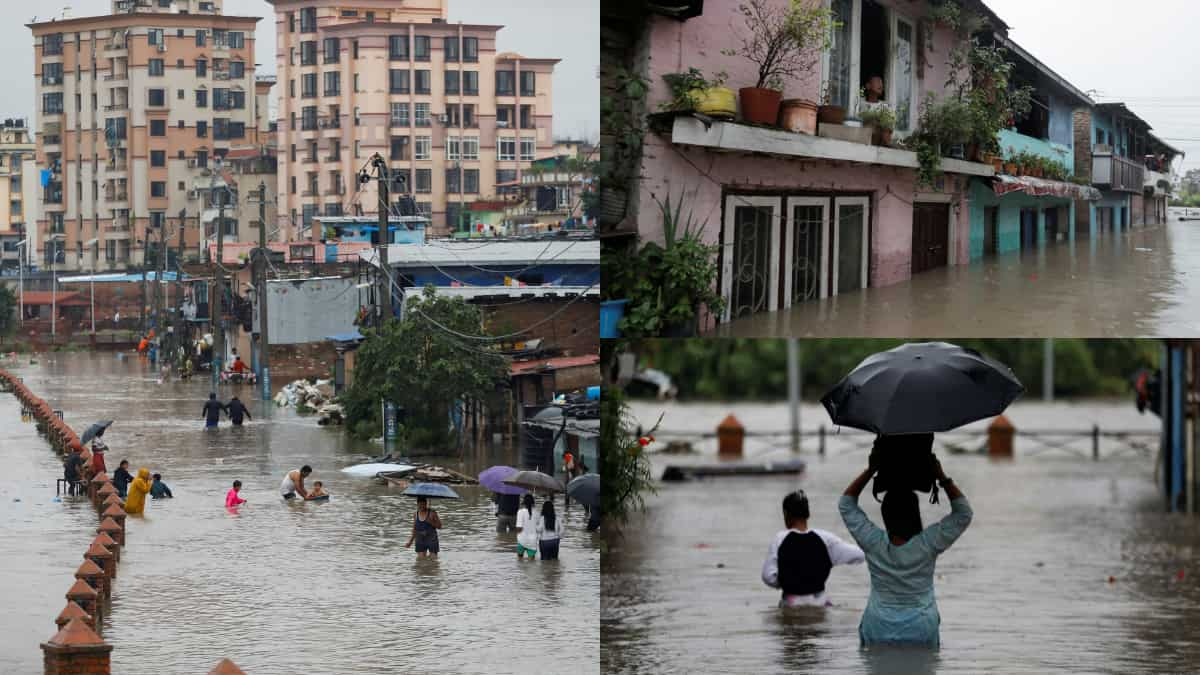Once more Nepal has succumbed to the relentless fury of the monsoon rains. As heavy storms lash the country from June to September every year, they carry with them a devastating cascade of landslides and floods, abandoning a path of destruction and despair.
In the current year, the toll is especially horrid, with 38 lives lost 33 people still missing, as reported by the Nepal home ministry. The catastrophe has prompted a frantic race against time as rescue workers and authorities work tirelessly to save lives, provide relief, and mitigate the ongoing crisis.

Also Read: 5.4 Magnitude Earthquake Hits Eastern China, 21 Injured
Sources Related to Floods in July and August Around the World (For R&D)
- China floods: Xi Jinping urges action as rains kill 15 and displace thousands
- At Least 1 Dead as Heavy Rains Set Off Flash Flooding in New York
- Mongolia – Floods
- Assam Floods: About 18,000 People Suffer From Terrible Flood In Dhemaji District
- At least 50 dead in Pakistan monsoon floods since end of June
- New Delhi Floods: Deadly Monsoon Rains, leaving 15 Dead
- Japan Floods: Heavy Rains Causes Floods and Landslides, 1 Dead
- South Korea Floods: At Least 26 Dead and Over 1000 Evacuated
- Central Russia:10 Dead, Including 3 Children as Strong Winds hit Tourist Camp
- Typhoon Doksuri: Beijing’s Heaviest Rain in a Decade Kills at Least 11
- Slovenia Floods: At least 2 Dead, Forcing Evacuations
- Georgia: 11 Killed in Landslide at Mountain Resort Town of Shovi
- Alaska: Houses Swept Away by Glacial Floods in Juneau
The monsoon rains, a natural phenomenon as ancient as the Himalayan peaks that define Nepal’s skyline, hold both the promise of sustenance and the threat of disaster. These downpours are essential to the country’s farming, recharging water sources and supporting its sensitive ecosystems.
Nonetheless, similar nurturing waters can transform into a savage power, setting off landslides and floods that disturb lives, displace communities, and wreak havoc on infrastructure.
In the core of the current year’s misfortune, the district of Makwanpur has arisen as a point of convergence of misery. A landslide swept the houses in central Nepal, leaving one lady dead and six of her relatives missing.
The story of her rescue, initially instilling hope, eventually ended in tragedy as she succumbed to her injuries. Rescue teams, braving treacherous conditions and unstable terrain, are tirelessly searching for survivors and missing persons, their efforts embodying the spirit of solidarity and resilience that defines the Nepalese people.
Also Read: South Korea: The 25th World Scout Jamboree Hit by a Serious Heatwave
The effect of the landslides and floods isn’t restricted to death toll alone. The Bagmati and Bishnumati rivers, swollen beyond their banks, have inundated homes, temples, and entire communities, displacing residents and causing immeasurable damage.
Local television broadcasts reveal the heart-wrenching sight of individuals attempting to salvage their belongings from the deluge.
The very corridors that once connected people to their homes and livelihoods have become waterlogged arteries of disruption, leaving a valley’s traffic gridlocked and daily life thrown into disarray.
In the Kathmandu Valley, where millions call home, the Bagmati river’s break has transformed urban landscapes into watery graveyards of submerged temples and roads.
Authorities have been forced to issue alerts about further embankment breaches, amplifying the sense of urgency and concern that hangs heavy in the air.
Also Read: Perucetus Colossus: The Heaviest Animal that Lived 40 Million Years Ago
As rescue tasks proceed, it turns out to be progressively apparent that there’s no time to waste. The rainstorm’s tenacious attack gives no indications of decreasing, and the Meteorological Determining Division cautions that rainfall is probably going to continue for quite a long time into the future.
This meteorological challenge compounds the already complex task of reaching those in need, especially in remote and isolated areas.
The Nepalese spirit of resilience is palpable in the tireless efforts of rescue workers, volunteers, and authorities who are working around the clock to alleviate the suffering and minimize further loss. The commitment to preserving life and providing relief shines as a beacon of hope amidst the darkest moments.
While the monsoon rainfall are an essential piece of Nepal’s regular mood, the devastating consequences they bring serve as a stark reminder of the need for preparedness and resilience-building.
Efforts to enhance infrastructure, develop early warning systems, and implement effective disaster management strategies are imperative to mitigate the impact of future calamities.
Also Read: Devastating Mediterranean Wildfires Kill More than 40

/cloudfront-us-east-2.images.arcpublishing.com/reuters/WKQJPJKBZVPFTOP3EL465676XE.jpg)





















+ There are no comments
Add yours